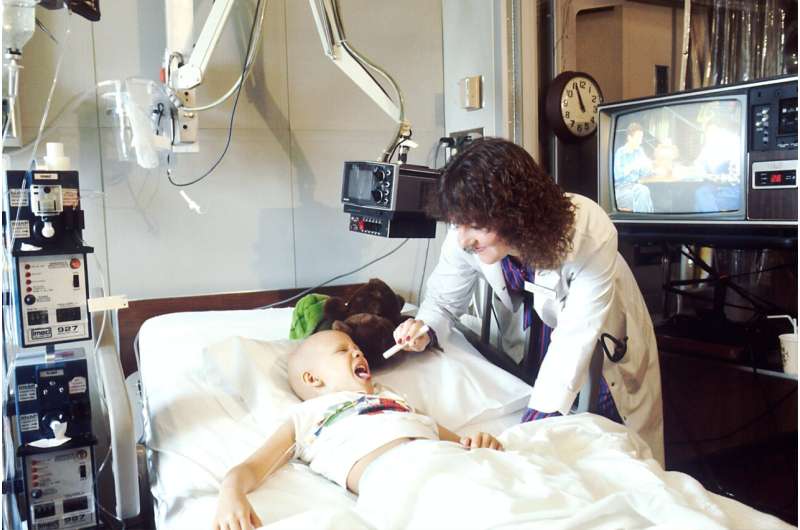This article has been reviewed according to Science X's editorial process and policies. Editors have highlighted the following attributes while ensuring the content's credibility:
fact-checked
peer-reviewed publication
trusted source
proofread
Does living along the US-Mexico border affect the chances of survival among children with leukemia?

Residing in border regions was linked with a higher risk of dying within five years among children with acute lymphoblastic leukemia, the most common type of pediatric cancer.
In an analysis of cancer registry data from Texas, children with acute lymphoblastic leukemia (ALL) who lived along the border with Mexico were more likely to die within five years than those living in other areas of the state. The findings are published in CANCER.
The United States-Mexico border has a mixture of rural and urban communities with populations living in these regions that are known to be medically underserved. Survival disparities have been observed here in adults diagnosed and treated for various malignancies, but information on pediatric cancer outcomes is lacking.
To investigate, Maria Castellanos, MD, currently of UCSF Benioff Children's Hospitals, and her colleagues at Baylor College of Medicine and Texas Children's Hospital conducted a retrospective survival analysis of children with the blood cancers ALL (the most common type of pediatric cancer) and acute myeloid leukemia (AML) whose information was listed in the Texas Cancer Registry. Between 1995 and 2017, there were 6,002 children diagnosed with ALL and 1,279 diagnosed with AML.
Among children with ALL, the proportion of children who survived for at least five years after diagnosis was lower in those living in border regions compared with those living in non-border areas (77.5% versus 85.8%).
After adjusting for other factors known to impact survival such as age at diagnosis, sex, and socioeconomic status, children with ALL living along the border experienced a 30% higher risk of death compared with children living elsewhere in Texas. For children with AML, there was an increased risk of death only for those living in rural border counties.
"While there have been tremendous achievements in maximizing cure rates for children with leukemia in the United States, not everyone is benefiting from these advances. We know there are differences in survival, with children from historically marginalized Hispanic and Black communities faring worse than white children," said Dr. Castellanos.
"There is an urgent need to identify the reasons why these differences in survival are occurring, including an assessment of the barriers to obtaining health care and strategies to successfully reduce barriers."
An accompanying editorial by Paula Aristizabal, MD, MAS, and colleagues from the University of California San Diego encourages officials to work to improve cancer outcomes in rural areas with concentrated poverty. "We urgently call for the attention of public health leaders and healthcare providers in both the U.S. and Mexico to mitigate the health disparities suffered by immigrants, a population that plays a vital role for the economies and social fabric of these two countries," the authors write.
More information: Maria I. Castellanos et al, Ethnic disparities in childhood leukemia survival by border residence: A Texas population-based analysis, CANCER (2023). DOI: 10.1002/cncr.34636
Paula Aristizabal et al, At the border: A call to action for health equity for children with leukemia, CANCER (2023). DOI: 10.1002/cncr.34629




















